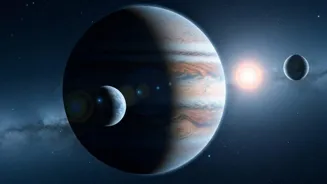Asteroids: A Closer Look
On August 8, 2025, Asteroid (2025 OJ1), about 300 feet wide, and (2019 CO1), roughly 200 feet wide, will whiz by. OJ1 will pass approximately 3.2 million
miles away, while CO1 will pass at about 4.24 million miles. While these are close, it is still a safe distance, as confirmed by NASA. This highlights the dynamism of our solar system.
Size, Speed, Distance
Asteroid (2025 OJ1) is estimated to be about the height of a 30-story building, making it a notable space rock. It will zoom past at a distance of approximately 3.2 million miles. (2019 CO1) is comparable to a large airplane in size. It will fly by at a distance of around 4.24 million miles. NASA constantly tracks these objects.
No Collision Fears!
Good news! NASA assures us that neither asteroid poses a collision risk. Scientists are confident both will safely pass Earth. It is important to note these flybys are part of the natural cosmic dance, happening regularly. NASA's tech helps to monitor these events and keep the public informed well in advance.
What are NEOs?
Near-Earth Objects (NEOs) are comets or asteroids that come near Earth. Tracking NEOs is crucial for planetary defense. Early detection allows for preparation. The asteroids approaching on August 8, 2025, are part of this monitored group. NASA and global space agencies are actively involved in tracking and studying them.
Stay Updated Easily!
Curious about what's happening? NASA provides updates on their Near-Earth Object Web Portal. You can also find information on social media. Live streams and news releases keep you informed. Keep an eye out! This is a great chance to learn more about our solar system and space exploration.













